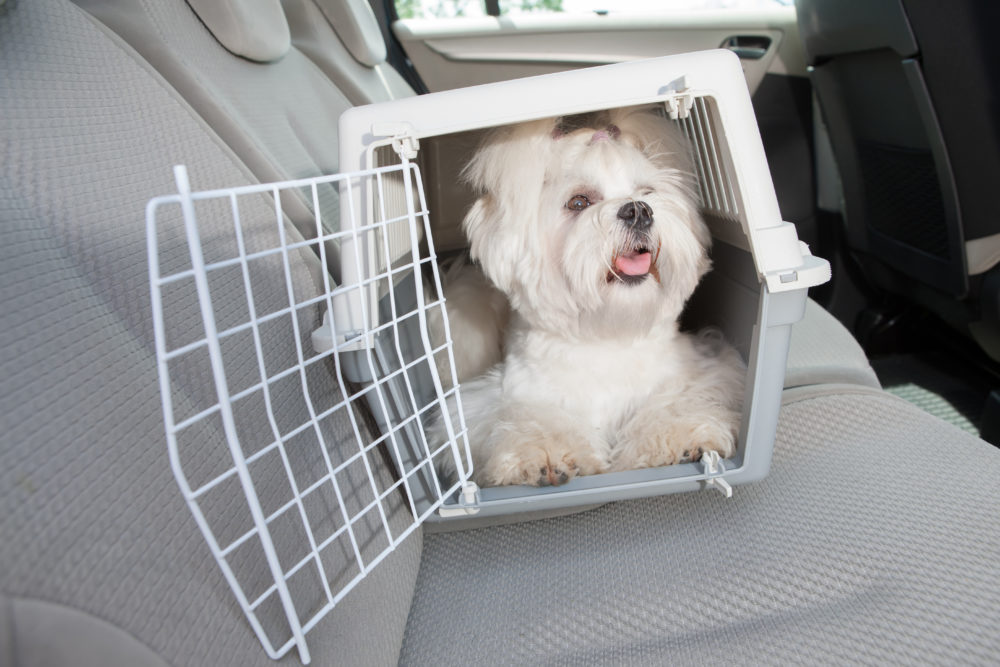It’s the holiday season, and if your dog is lucky, he’s going to be doing some traveling with you. But before you load him into the car and head off down the road, it’s important to consider both safety and the law when it comes to driving with dogs.
At least seven states have laws on the books that require people to take certain precautions when driving with a dog. In Connecticut, drivers can be ticketed under a distracted-driving law if they operate a vehicle with a dog in their lap. In Rhode Island, dogs must either be belted in with a harness or secured in a crate while the car is in motion.
California, Maine, Massachusetts, Minnesota, and New Hampshire all have laws requiring that dogs riding in the back of a pickup truck be secured so they can’t jump or fall out of the truck bed. A handful of other states have distracted-driving laws that can potentially make drivers liable for an unrestrained dog in their vehicle. To find out about laws in your state, see Orvis’ “Dogs and Distracted Driving” page.
Safe Rides
Whatever the laws in your state regarding dogs in the car, the safest approach is to restrain your dog when he’s riding in your vehicle. One way to do this is with a harness that attaches to a seat belt. According to the Center for Pet Safety, you have a choice between two types of harnesses: restraints that will contain your dog and keep him from distracting you while you’re driving, and harnesses that will protect your dog should you get into an accident. Harnesses that will keep your dog safe in an accident have been crash tested and should state so on packaging or in the product description.
Having your dog ride in a crate while you are driving is another way to prevent distracted driving, while also helping to keep your dog safe in the event of an accident. The Center for Pet Safety recommends placing small carriers on the floor behind a front seat and securing larger carriers with tiedowns so they stay put during a crash.
Ready, Set, Go
Whether you are using a harness or a crate to restrain your dog, take time to acclimate him to this type of restraint before taking him on a long car ride. Have your dog wear his harness around the house for a few days first. Once you buckle him in, take him on a few short rides around the neighborhood. Use treats and plenty of praise to let him know being buckled in is a good thing.
If you plan to use a crate for travel, make sure your dog is crate-trained before you ask him to spend time inside it in the car. Crate training involves gradually getting your dog used to spending time inside the crate and helping him see the crate as his safe place.
One last note on riding in cars with dogs: You’ve no doubt seen plenty of cars whose drivers allow their dogs to hang their heads out the windows. While it may be tempting to let your dog stand on the seat with his face in the wind as you drive, this is a dangerous practice that can result in injury to your pet. Your dog can suffer eye damage from debris blowing in his face, and he can be seriously injured if you get into an accident. Even though dogs may enjoy riding with their ears blowing in the wind, as a pet parent, it’s your job to choose safety over fun. The good news is that your dog won’t pout—at least not for long.
This article was reviewed/edited by board-certified veterinary behaviorist Dr. Kenneth Martin and/or veterinary technician specialist in behavior Debbie Martin, LVT.








